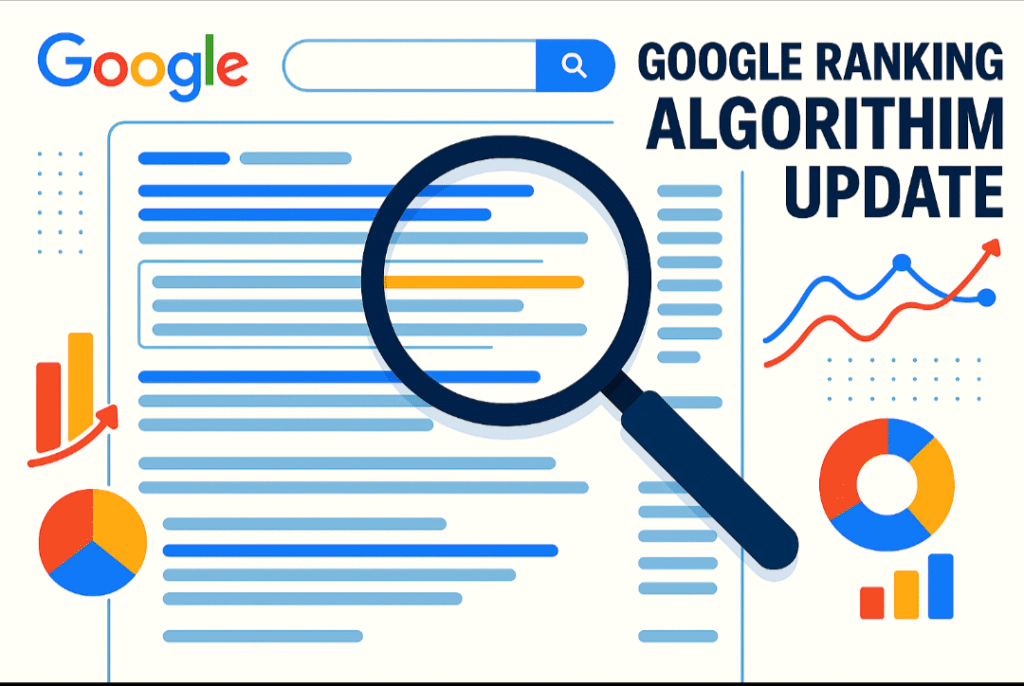Introduction: Why Google Updates Matter More Than Ever
Every website owner, digital marketer, and blogger lives in anticipation (and sometimes fear) of the next big Google ranking algorithm update. It’s not just tech jargon—these updates determine how much organic traffic your website attracts, how visible you are to your audience, and whether your content ends up on Google’s coveted top pages or gets buried in the search abyss.
So, what’s behind the buzz of the latest Google algorithm update, and how can you leverage it to boost your rankings both on standard Search and Google Discover? In this article, I’ll break down the most recent changes in plain English, share actionable SEO and Answer Engine Optimization (AEO) strategies, and show you how to adapt so your site not only survives but thrives.
What Is a Google Ranking Algorithm Update?
Simply put, Google’s ranking algorithm is the sophisticated system that sorts and ranks the billions of websites on the internet. These updates—some big, some small—are Google’s way of ensuring users get the most relevant, reliable, and user-friendly answers to their questions.
But unlike a single switch, the algorithm is constantly learning and evolving. Several times a year, Google drops a “core update” that can send shockwaves through rankings. The most recent major update introduced a few standout shifts that demand our attention.
What’s New in the Latest Google Ranking Algorithm Update?
1. Helpful Content Takes Center Stage
Google’s recent update cranks up the focus on “helpful content.” In other words, the more your article truly solves a reader’s problem or answers their specific question, the better it will rank.
- Content that’s original, deeply informative, and user-focused outperforms generic, fluff-filled articles.
- Google’s systems are now smarter at detecting when pages offer real value or just repeat the same information found elsewhere.
2. E-E-A-T: Experience, Expertise, Authoritativeness, Trustworthiness
- The algorithm now pays extra attention to signals showing the author’s real experience and expertise on the topic.
- Citing credible sources, displaying author credentials, and including original case studies or firsthand insights all add powerful trust signals.
- Websites with a strong reputation, transparent information, and secure connections (HTTPS) get a boost in rankings.
3. Technical Signals Are More Critical
- Fast-loading pages and responsive mobile design are now must-haves, not nice-to-haves.
- Page stability (no annoying popups or layout shifts) and clear navigation are also ranking factors.
- Secure sites with valid SSL certificates are given preference.
4. Enhanced Spam Filters
- Google’s new update further cracks down on thin, repetitive, AI-generated, or manipulative content.
- Unnatural keyword stuffing, misleading meta tags, and links to shady sites are red flags that can push your rankings down.

5. Improved Discover Integration
- Sites optimized for mobile, visuals, and user engagement now find it easier to appear in Google Discover feeds.
- Eye-catching images, timely topics, and optimized headlines are essential for Discover visibility.
FAQ: Latest Google Ranking Algorithm Update Explained
Q1: What is the core goal of the latest Google ranking algorithm update?
A: To reward websites that provide genuinely helpful, original, and trustworthy content, and to demote manipulative or low-value pages.
Q2: How can I make my content stand out after the update?
A: Focus on experience, credible sources, real examples, user intent, and engaging visuals. Keep your writing human and relatable.
Q3: Does AI-generated content still work?
A: Only when it’s heavily edited, personalized, and adds unique value—raw, generic, or repetitive AI content will likely get penalized.
Pro Tips for Ranking on Google’s Top Page & Discover
- Monitor your rankings in Google Search Console after every update.
- Continually refresh your best-performing pages with new info, visuals, and FAQs.
- Respond to trending topics and questions within your niche.
- Ensure your site loads in under 2 seconds, especially on mobile.
- Commit to transparency—display author bios, update dates, and source citations.
Conclusion: Stay Ahead by Adapting, Not Reacting
The digital landscape is always evolving—but at its core, Google’s mission remains: deliver the best possible answers to its users. By understanding the ethos of each update, humanizing your approach, and optimizing both technically and editorially, you’ll not only survive each new algorithm change—you’ll thrive and grow your organic reach.
Ready to future-proof your content strategy? Start with this article, review your other pages, and make “helpfulness” and “human touch” your new SEO mantra!